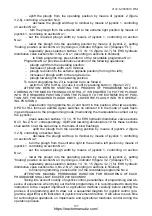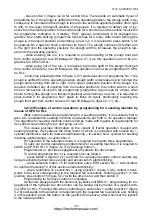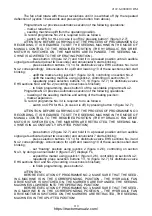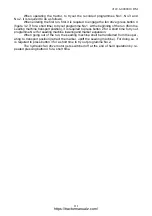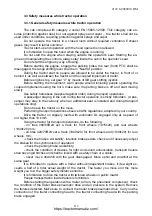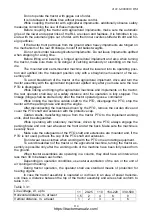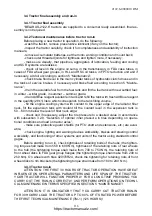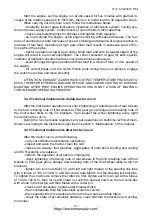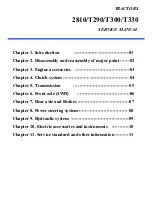
2122.6-0000010 OM
121
Service staff qualification requirements for tractor “BELARUS-2122.6” operation:
- only qualified service staff trained for safety arrangement and precautions, having
tractor driving license of due form and having admission to operate the specific tractor, is
allowed;
- if a tractor owner (or any person responsible for tractor operation) does not oper-
ate the tractor himself, he shall make sure that before starting tractor operation all persons
related to tractor operation have been duly trained for safety arrangement and precautions
and for correct coupling of implements with the tractor, and have studied the operation
manual for tractor use.
ATTENTION: OWNERS AND OFFICIALS OR OTHER PERSONS RESPONSIBLE
FOR TRACTOR OPERATION AND MAINTENANCE MUST NOT ALLOW THE TRACTOR
FOR ROAD TRAFFIC AND COUPLING WITH IMPLEMENTS, OR ADMIT OPERATORS
FOR TRACTOR DRIVING WITH VIOLATION OF CURRENT TRAFFIC REGULATIONS
AND THE GIVEN OPERATION MANUAL!
ATTENTION: BEFORE STARTING TRACTOR MOVEMENT IN STRUCTURE OF
MTU, MAKE SURE THERE ARE NO PEOPLE NEARBY, INCLUDING THE AREA BE-
TWEEN THE TRACTOR AND THE IMPLEMENTS OR TRAILERS (SEMI-TRAILERS)
COUPLED!
4.2 Types of implements coupled with tractor “BELARUS-2122.6”
According to the type of coupling with tractors “BELARUS-2122.6” the implements
are divided into the following types:
- mounted implement is fixed in three points to the LL upper and lower links. The
tractor can carry the weight of an implement in full. The implement structural elements in
transport position do not touch the ground. While changing the implement position from
operating to transport, the point of the implement connection to the tractor is forcedly dis-
placed up to the new point;
- semi-mounted implement is fixed in three points to the LL upper and lower links or
only in two points to the LL upper and lower links. The tractor can carry the weight of an
implement in transport position partly and mostly by its traveling wheels (usually one or
two). While changing the implement position from operating to transport, the point of the
implement connection to the tractor is forcedly displaced up to the new point. Two-point
articulated linkage is carried out by connecting the implement suspension axis link pins to
the LL lower links (upper link is not used). It is also possible to use a cross bar from the
tractor or implement kit;
- semi-trailed implement is usually fixed in one point by means of a tractor drawbar
ring to the DH. It is also possible to use a two-point connection with lift linkage (upper link
is not used). The tractor can carry the weight of an implement in transport position partly
and mostly by its traveling wheels (usually two). While changing the implement position
from operating to transport, the point of the implement connection to the tractor remains
unchanged. Semi-trailed implements include various vehicles for general and special pur-
poses: general purpose semi-trailers, tank semi-trailers, dump trucks and special purpose
semi-trailed vehicles for mechanization of technological process in agriculture;
- trailed implement is usually fixed in one point by means of a tractor drawbar ring to
the DH. It is also possible to use a two-point connection with lift linkage (upper link is not
used). The chassis can carry the weight of an implement in transport position in full, the
tractor hitch mechanism (DH or LL) is loaded only with the weight of an implement connec-
tor. While changing the implement position from operating to transport, the point of the im-
plement connection to the tractor remains unchanged. Semi-trailed implements include
various vehicles for general and special purposes: general purpose trailers and semi-
trailers, tank semi-trailers, dump trucks, and special purpose semi-trailed vehicles for
mechanization of technological process in agriculture.
https://tractormanualz.com/

